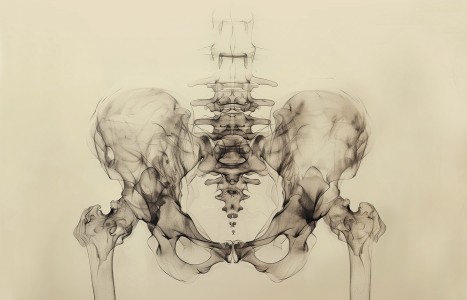People today want convenience, whether it be from their bank, credit card, favorite retail store, or restaurant. They demand it from the companies who hold their loyalty, including their health care providers (you). They don’t want to call and possibly be put on hold, and they want to use an app or schedule an appointment on your website. Here are three reasons your practice can gain by switching to online appointment scheduling.
From Classroom to Zoom and Much More
Zoom? That's only part of a school's activism during a pandemic when you talk to Mary Faria, PhD, president and CEO of AOMA Graduate School of Integrative Medicine in Austin, Texas. As one of the first schools to receive emergency relief funds through the CARES Act, AOMA has offered grants to students "needing support for basics like food, rent and childcare," according to Dr. Faria.
AOMA also opened a food pantry. "Many of us donate bags of nonperishable foods for students struggling because of part-time job loss due to COVID-19," she told me. Dr. Faria is praised by students and faculty alike for her practical and compassionate handling of the crises, and for inspiring teachers to be innovative.
Lesley Hamilton, DAOM, AOMA's VP of academics and accreditation, adds yet more encouragement. Recent changes in financial aid "allow students to continue to get aid for living expenses even if they need to take a leave of absence," she said. AOMA's student services team gives weekly Zoom town halls for support. Dr. Hamilton also paced faculty members through Zoom "nitty gritties," and they hold regular e- meetings to air-and-share tips and questions.
Conducting Practical Classes & Clinics On Zoom
Teachers of all forms of Asian medicine have been e-adapting overnight. Practical classes and supervised clinic present the biggest challenge.
I polled a range of teachers nationwide. It is fascinating to see the very different spins. Some, like AOMA's Xiaotian Shen, MD (China), LAc, share PowerPoint case studies, diagnoses and treatment plans in virtual clinics with students for a vigorous discussion. He then opens breakout rooms for groups of three or four students to brainstorm before gathering everyone for a final exchange, questions and suggestions.
Dr. Shen asks them, "What is your opinion?" He finds ways of connecting by phone with students with spotty Internet connections, or emails slides they are unable to see in PowerPoint.
AOMA's Billy Zachary, LAc, DAOM, AOBTA-RI, developed a freewheeling clinic by inviting former clients and his buddies to join them via Zoom. Students do assessments via Q&A and also quiz one another. Zachary takes a laddered approach: "Student 1 does the interview; student 2 devises an appropriate acupuncture/acupressure procedure; student 3 discusses herbs; and student 4 discusses nutrition."
This is followed by a group summary. Students also do intakes on one another. As Zachary teaches acupuncture and ABT, I asked about the involvement of body language/movement as part of the assessment. He said, "Students need encouraging to get people to stand up and move." After the formal intake, he prompts them to think outside of the box and ask "one more question." He says newer students are handling virtual clinic well; the more advanced students are taking time to adjust.
Victor Manual, AOBTA, CP in tuina, who graduates from AOMA's MAcOM program in December, says, the zoom approach requires yet more concentration and focus than a live clinic. Yes, they assess tongues on Zoom. But as an alternative to pulse taking, they encourage clients to assess their own neck pulse for carotid excess / deficiency variations, followed by breathing exercises for balance.
AOBTA member schools and certified instructors also hold regular Zoom meetings for discussions on the best ways of assessing students' hands-on skills in virtual clinics. And Tom Banasiak, AOBTA-CI, chair of the ABT department at New York's Swedish Institute, says all his classes are given through the Microsoft Teams video platform, combining lecture with considerable self-palpation. However, the plan is to make up the practical side of instruction when they return to campus, with restrictions.
Marjorie Pivar, AOBTA-CI, director of the Shiatsu School of Vermont, invites clients to join their Zoom clinic. One student and one client go into a breakout room for 15 minutes; then the client leaves the Zoom call while students pair up with a study partner "to discuss their cases and gather more ideas."
This is followed by a group brainstorm. Exact treatment protocols are finalized with Pivar before student and client have a private Zoom meeting to refine strategy. Often the student will encourage a client to access or hold certain points, and the student will mirror this simultaneously. Client education is the key. Students then write up a case report with final evaluations.
Yet More Experiences
Zoom teaching is an ongoing process of trial-and-error for some, and a perfect tool for the tech savvy. According to Bill Helm, AOBTA-CI, who teaches tuina / taiji / qigung at Pacific College of Health and Science (formerly PCOM, now PCHS) in San Diego, says "Our classes are synchronous and will be front loaded for the first four weeks, with lecture and individual work, postural analysis, self-tuina, qigong."
Like several other teachers, Helm mentioned the challenge of students who live with others. Loss of privacy can be a concern. Some teachers say family pressures can be alleviated when students are able to integrate a child or pet to work on during Zoom classes.
Online Qigong and Taiji?
Linda (Yuxia) Qiu, MD (China), LAc, has been using Zoom to teach personal classes in qigong since the fall of 2018, and plans to upload videos to YouTube so students can access them at any time. She is one of several teachers I interviewed who are expanding their qigong Zooms. Matthew Sweigart, AOBTA–CI, director of HeartMind Healing in Nevada City, Calif., teaches a regular Zoom qigong class to a group of seniors who live independently in a retirement center.
Imaginative Teaching: Shiatsu
Shiatsu school Pathways to the Heart director Nini Melvin, AOBTA-CI, of Northampton Mass., is mindful of Internet overload hitting both teacher and student. For balance, when she wove a relevant Five Element theme into her springtime class of second-year students, she told them to "run outside into nature for 10 minutes" to focus on one aspect of the wood element.
When they returned to their computers to share, Melvin said, "Each one had a different experience." One focused on legs, another on torso, another on head, others on neck, shoulders, and arms."
What about your feet?" she asked, and then got the group to hold liver and gallbladder points on their feet for some necessary wood grounding.
Zen Shiatsu Chicago director Steve Rogne, AOBTA-CI, advises asynchronous learning so students can observe classes in their own time, especially those who have returned to different time zones. He praises the Thinkific.com platform as "pretty simple and effective," but adds, " You need to verify student attendance and progress."
Looking ahead, Rogne is encouraging Cindy Banker, AOBTA director of education, to plan future policies for those chunks of the curriculum that will be acceptable to deliver online.
Finally, From the NCCAOM...
Reassuring words from CEO Mina Larson, who advises students to check the NCCAOM COVID-19 resource page for current information. Eligible candidates can now schedule exams at Pearson Vue test centers as permitted by local jurisdictions. Eligible students who are graduating before Dec. 31, 2020, can apply for NCCAOM certification and take the exams 60 days before graduation. Students are advised to contact their schools regarding eligibility under these special circumstances.
Author's Note: Feel free to email me at pamelacudot@gmail.com to share your teaching and supervised clinic innovations on Zoom. I may include them in a future column!


